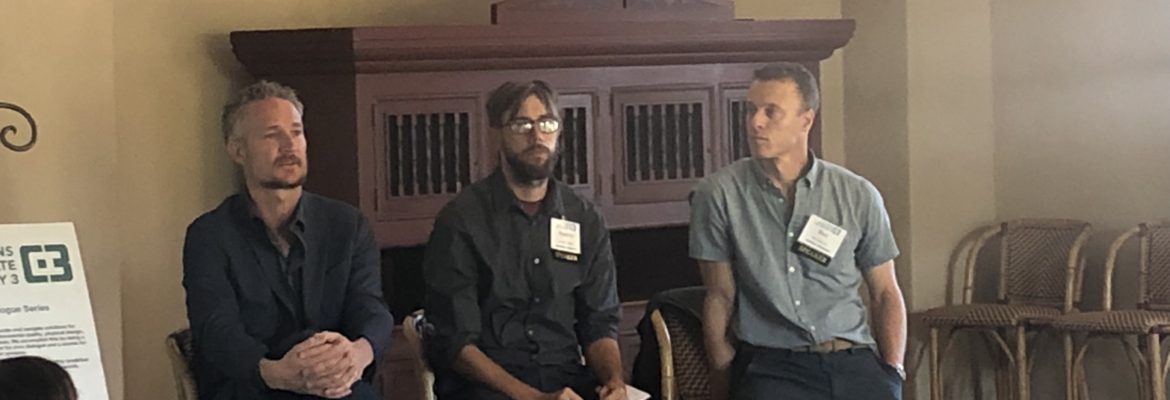Earlier this year, Citizens Coordinate for Century 3 (C-3) asked its members to help design a land use plan that would ensure meaningful restoration of native wetlands at De Anza Cove in the northeast corner of Mission Bay. After months of additional outreach and input, on October 24, the membership organization convened a panel to unveil the land use plan and discuss why this “ReWild” restoration plan is important to San Diego.
Participating on the panel were Andrew Meyer, director of conservation, San Diego Audubon Society; David McCullough, principal, McCullough Landscape Architecture, Inc.; Ben McCue, executive director, Outdoor Outreach; and moderator Tommy Hough, environmental advocate and C-3 board member.
Throughout this year, C-3 hosted several community meetings and discussions and worked collaboratively as part of the ReWild Mission Bay coalition to craft a functional, workable plan for De Anza Cove, in the northeast corner of Mission Bay Park.
The goal behind the effort is to develop an eco-friendly plan, re-imagining guest lodging in the Bay, while also incorporating the most robust restoration of wetlands studied by the Audubon Society. The result incorporates the “Wildest” wetland restoration option as a baseline for mapping out a comprehensive reimagining of facilities to revitalize the Kendall Frost Marsh located in De Anza Cove to help ensure climate resiliency as sea levels rise over the next 80 years and the natural water filtration system the marsh offers.
“This wetland is a very endangered habitat; we only have about 40 acres left in that corner of the bay,” said Meyer. The “Wildest” version of the ReWild plan would restore the landscape back to its original form, he added.
To underscore his point, Meyer shared that three billion birds have been lost since 1970 in the U.S., which amounts to 70% of the total population, and two-thirds of the birds are at risk of going extinct as the result of climate change.
He highlighted three key components of the “Wildest” plan:
- Improve water quality.
- Provide public access to the shoreline for everyone, including accessible paths.
- Increase resiliency – as the sea level rises, habitat declines. Without making changes, Meyer says San Diego will be left with muddy islands and less land value.
McCullough shared components of his redesign vision for De Anza Cove with the audience:
- A restored Rose creek would offer a fantastic opportunity to feed the habitat.
- The historic club house would remain.
- The baseball fields and tennis courts need restoration, and soccer fields and playgrounds could be added.
- Trails and boardwalks would provide access for everyone.
McCue added that De Anza Cove is an important resource for outdoor education. He called the project “critically important” and emphasized how many children shape their understanding of the coast on visits to Mission Bay.
C-3 will continue working with these organizational partners to promote this regional park asset, highlighting increased access and wetland restoration as part of its Mission Bay for All campaign.
As part of C-3’s mission to be a conduit for information, a facilitator for civic dialogue and a source for reasoned opinions, the member-supported nonprofit organization hosts frequent events highlighting a multitude of issues and themes of interest to engaged San Diegans.
About C-3
Since 1961, Citizens Coordinate for Century 3 (C-3) has sought and successfully advocated for the highest standards in urban design, community planning and access to public open space. As a member-supported, nonprofit organization, we bring together residents and professionals to jointly craft solutions to the challenges we face in our city and region. http://c3sandiego.org.

